Feel-good bromance stories about great buddies and mismatched sidekicks are often a hit with readers and audiences. What is bromance exactly, and how can you write better buddy stories using an adapted version of Gwen Hayes “Romancing the Beat” plot structure? Read on to find out.
What is the Bromancing the Beat Plot Structure?
First, what is bromance? It’s an “Intimate and affectionate friendship between men” (the word “bromance” only entered the dictionary in 2010).
Some bromance examples from movies and books:
- Martin Riggs and Roger Murtaugh in Lethal Weapon (1987), mismatched LAPD detectives who strike up a deep friendship on the job in this buddy cop movie
- Rock music fans Wayne Campbell and Garth Algar in the 1992 comedy Wayne’s World
- Frodo Baggins and Samwise Gamgee in J.R. R. Tolkien’s The Lord of the Rings
- The traveling Sal and Dean in Kerouac’s On the Road
The Bromancing the Beat plot structure is inspired by Gwen Hayes’ Romancing the Beat, a flexible plot template for writing romance.
Like Hayes’ plot structure, Bromancing the Beat consists of twenty beats. Instead of charting the ups and downs of a romantic relationship, this sequence explores the highs and lows of a fledgling friendship.
So, why use the Bromancing the Beat plot template?
3 Ways the Bromancing the Beat Plot Structure will Improve Your Story
Great bromance stories share much in common with great romances. Meet cutes, for example – unusual, humorous, or cute first meetings.
Here are three ways Bromancing the Beat will help you write a great tale about heroes on their way to becoming best buddies:
Create Intriguing Tension and Doubt
Friendship, like love, often goes through awkward phases. “Do I really trust this person?” your protagonist might ask. Your protagonist may even be adamant at first that they shouldn’t trust or work with the other person.
The beats in “Bromancing the Beat” (more on these below) will help you remember to make eventual friendship or co-operation read as earned and true.
Build Exciting (or Hilarious) Conflict Arcs
What’s a great buddy story without a little conflict?
Think of the world of comics and the dynamic duos we find there, like Asterix and Obelix or Tintin and Captain Haddock. These unlikely companions show that opposites do attract. Yet significant differences also lead to conflict.
Whereas in romance conflict helps to build a sense of chemistry, romantic or sexual tension, in a bromance, buddies’ conflicts might jeopardize their collaboration or lead to moments of comic relief. For example, friends roasting each other for their flaws, quirks or mistakes.
As you plot your friendship’s initial conflicts, think about questions such as:
- What is the reason your H1 (your first hero) thinks that a partnership or cooperation will never work?
- What argument might your H1 have, either vocally or internally, about why they shouldn’t get too close to H2? Make this compelling
Create Surprise Using Turning Points
Even once friends come together and set their differences aside to pursue shared goals (like the LAPD cops in Lethal Weapon pursuing suspects), it shouldn’t be a completely smooth ride.
Turning points give stories moments of surprise — false highs or mistaken assumptions may lead to moments of reckoning fast.
The Bromancing the Beat plot structure will help you remember to build in turning points that keep readers or viewers engaged and full of suspense, as it includes beats that focus on turning points.
Explore the Bromancing the Beat Template in Plottr
Ready to create excellent adventures for your Bills and Teds (or Barbs and Taras)?
Let’s explore the Bromancing the Beat plot structure, with examples from the classic bromance movie Lethal Weapon:
Beat 1: Introduce H1
Hook your reader’s attention and reel them into the story by introducing your first hero or heroine and their everyday life. Give a glimpse of their life and the internal struggle that’s holding them back from love (or forging new friendships).
- Introduce your H1’s external goal — something they want in their life, such as a promotion, vacation, or something they wish to attain
- Share a hint of what your character needs (such as to overcome a character fault or learn a crucial ability or skill)
Example: Roger Murtaugh is turning 50, and just wants to quietly work his case for the police department alone. He doesn’t want a partner again, ever.
Beat 2: Introduce H2
Continue to hook your reader/viewer by introducing the second hero/heroine and their everyday life. Introduce the internal struggle holding them back, too.
- Introduce your H2’s goals and needs, as you did with your H1
- Make this introduction compelling (such as showing their desires, flaws, successes, or unique quirks of their personality)
Example: Martin Riggs has lost his wife in an auto accident. He’s suicidal and depressed, but the only thing that keeps him going is the job – his work with the police department. No one wants to be his partner because they either think he is a psycho or is faking it.
Beat 3: Meet Cute
The two Protagonists meet for the first time on the page, brought together by external forces, chance, or a life event.
There is usually an instant dislike with one or both of the Heroes feeling a reservation about their new partner, but some respect can also show through.
Example: Roger Murtaugh sees a man with a gun in police headquarters. He runs to subdue the suspect, who throws him to the ground with a judo move and then is introduced as his new partner, Martin Riggs.
Beat 4: I Don’t Think So
The H1 makes an argument against cooperating with the H2. This sets up the relationship arc for the reader. The two clearly must work together to achieve a common goal, but the character gives a reason this will not work, not now, not ever, but especially not with H2.
- What is the reason H1 thinks that a partnership or cooperation will never work?
- Depict the argument H1 has either vocally or internally, and make it convincing
Example: Neither Roger Murtaugh nor Martin Riggs wants to work together, but the department has compelled them to do so, so they are stuck. Murtaugh thinks Riggs is crazy, and Riggs thinks Murtaugh is an old man.
Beat 5: Stuck Together
This beat is the plot thrust that brings the story into the second act. An event or situation forces the two protagonists together to achieve a goal or solve a problem.
This event not only raises the stakes but also clearly defines each protagonist’s goal. While still at odds with each other, they begin to respect and understand each other. The two Protagonists cannot walk away from each other now — not until they see this conundrum through.
Example: Riggs and Murtaugh are called out to situation where a man is threatening to jump to his death. Riggs volunteers to talk the man down, but instead handcuffs himself to the suicidal man, and they jump together into the fire department’s airbag. Riggs is hailed as a hero, but Murtaugh is not so sure.
Beat 6: Absolutely No Way
We see that H1 is sticking to their old ways and is not yet ready to accept the way that H2 does things, especially after either a stunt they pulled or something they said. They do not want this partner or any partner for that reason.
- Restate the argument against the need for a partner at all
- Establish how the external goals of H1 conflict with their internal needs
Example: Murtaugh discovers that Riggs himself truly is suicidal and doubts his mental health. Riggs states that the job is the only reason he does not take his own life. Murtaugh learns more from the police psychologist and decides he really needs to watch his back around Riggs.
Beat 7: Maybe You’re Not So Bad
H1’s false beliefs and arguments begin to be challenged as H2 becomes a vital part of their success. They need this new partner whether they like it or not, and despite their issues, they also have some good qualities.
Example: Riggs and Murtaugh share laughs as they head to the home of a suspect in Beverly Hills. Riggs offers to buy Murtaugh a birthday present.
Beat 8: In Fact, You’re Pretty Good
The protagonists are starting to work together as a team. In fact, things are pretty good.
H2 does something that really makes H1 think about their reluctance when it comes to accepting H2.
- What external and internal actions force H1 to reconsider their first impression of H2?
- Show examples of how the false beliefs discussed earlier are either unfounded or irrelevant considering the situation they find themselves in
Example: Riggs and Murtaugh head to a suspect’s home in Beverly Hills. Murtaugh subdues the suspect, but the suspect attempts to kill him. Riggs saves his life, and Murtaugh expresses his thanks begrudgingly.
Beat 9: We Can Solve This Together
The protagonists begin to question their first opinions of each other and their previous No Way arguments.
Each protagonist is still working toward their own goals, but working together is helping them in this process. H1 and H2 begin to see a path forward toward a solution to their current problem.
Example: Murtaugh takes Riggs home to meet his family. The two discuss the case and share some beers. The partnership seems to be working out for the better.
Beat 10: Turning Point
This is the false high. It appears as though the protagonists have a solution or at least the start of one. But that hope is dashed.
- Show the protagonists getting along and accomplishing a goal
- Showcase H1 and H2 displaying at least one skill they will need to make the resolution possible but only hint at how valuable it might be.
- Give the reader the impression that all will end well with the protagonists together, and the main story problem solved
Example: Riggs and Murtaugh go to the firing range and discuss a potential suspect. But when they arrive at her home, it explodes. They get a description for another suspect though, the one they think blew up the house.
Beat 11: New Information
Everything seems to be headed in the right direction until the protagonists learn something or an event happens that derails the current path of the investigation but also reveals a new clue or new information.
- Take away some of the confidence the two have felt in the solution to the problem (e.g. a suspect dies, trust is betrayed, or new information reveals errors in their thinking)
- Raise the stakes and threaten the relationship between H1 and H2 due to new conflict and tension
Example: Murtaugh confronts Michael Hunsacker while Riggs waits outside. Hunsacker is killed, and now the bad guys know who Riggs is. His life is now threatened.
Beat 12: Danger Zone
The relationship of the partners is threatened, usually by external events that trigger the internal fears of both H1 and H2. The peace of the previous beat is now disrupted.
- Show the threat to the growing relationship and partnership
- Allow the threat to trigger fear and threaten the desires of H1 and H2
- Raise the stakes for the partnership forcing them to either trust each other and work together or split up to find solutions on their own
Example: Riggs is nearly killed and Murtaugh’s family is in danger. In fact, his daughter has been kidnapped, raising the stakes, and the pair must now find and rescue her.
Beat 13: Trust Me
Trust Me is where H2 actually says to H1, “You have to trust me” or “You have to do things my way this time.” H1 is left with no choice and must follow their partner’s lead.
Example: Riggs tells Murtaugh he has to trust him. Murtaugh asks if he is as good as he says he is, and Riggs reassures him. They embark on a brave plan to save Murtaugh’s daughter.
Beat 14: Failure
The fears and false beliefs of H1 seem to have come true, and the partners’ carefully laid plans fail. They are not back where they started in this scenario – the situation is now much worse.
Example: The plan fails and Riggs and Murtaugh are captured. Murtaugh’s daughter also fails to escape. Both men are tortured, and neither will give up any information.
Beat 15: The Dark Night
The darkest moment. H1 and H2 have failed. They no longer believe they can rely on each other, and the bad guys appear to have achieved victory.
- Always tie the dark night to the internal conflicts of the protagonists and the external events that have led to this moment
- Show how the old way of doing things did not work, and how H1 and H2 now have no hope
Example: Riggs is tortured. He tells the men he knows nothing, and they promise to kill him at that point. He appears to be on the verge of death.
Beat 16: What Have I Done?
The Dark Night is the worst moment for H1. They are under threat of death or something even worse, and there seems to be no hope for escape. The bad guys have not only won but appear to be able to crush H1 entirely.
Example: Murtaugh is tortured and resists until his daughter is brought in and threatened. He seems on the verge of breaking.
Beat 17: Send Them Running
The glimmer of hope from the last beat has now become a flame. One or both of our protagonists have escaped and the bad guys are now on the run.
There is finally hope and victory seems to be possible, even if it is not yet likely.
Example: Riggs escapes, rescues Roger and his daughter, and the three of them run toward freedom, taking out bad guys along the way.
Beat 18: Life or Death
It’s life or death now. The protagonist must be willing to put it all on the line now or risk losing the one thing they need to survive this ordeal with the least amount of damage possible. The life-or-death moment, the great sacrifice, is here, but will it be enough?
- Create a life-or-death scenario that nearly solves the problem
- Don’t let them off the hook too easily — the life-or-death scenario only solves part of the problem
- There is usually at least one more problem standing in the way
- Portray the celebration of victory, but throw a hitch in it — something else is wrong
Example: Riggs goes after Mr. Joshua who escapes by stealing a car. Murtaugh goes after and kills General McAllister. As they celebrate, Murtaugh realizes that Mr. Joshua knows where he lives and will go after his family.
Beat 19: The Final Solution
In the last beat, a false victory occurred, but show the reader that things are not quite over. You’ve put both your main characters through the wringer, but there is one more challenge they must solve together.
Example: Riggs and Murtaugh head to Murtaugh’s home to catch the final bad guy (Mr. Joshua). They capture him and Riggs subdues him on Roger’s lawn. Mr. Joshua makes one last escape attempt, and Murtaugh and Riggs shoot him at the same time.
Beat 20: Epilogue
You don’t have to include an epilogue, but you may want to include a scene with a little conflict for some final intrigue. This is the return to the ordinary world; each protagonist has changed and fits in their world a little differently and with a new perspective.
Example: Riggs shares Christmas dinner with Murtaugh’s family at their damaged but soon-to-be restored home. We see the two of them have formed a new bond and a new partnership.
That’s all 20 beats in the Bromancing the Beat plot template! Keep reading to learn how to use it in Plottr.
How To Use the Bromancing the Beat Template in Plottr
Ready to write a bromance novel, movie script, or show concept?
First, make sure you have Plottr installed or get started with a free sixty-day trial.
- Step 1: From the Plottr Dashboard, select Create From Template
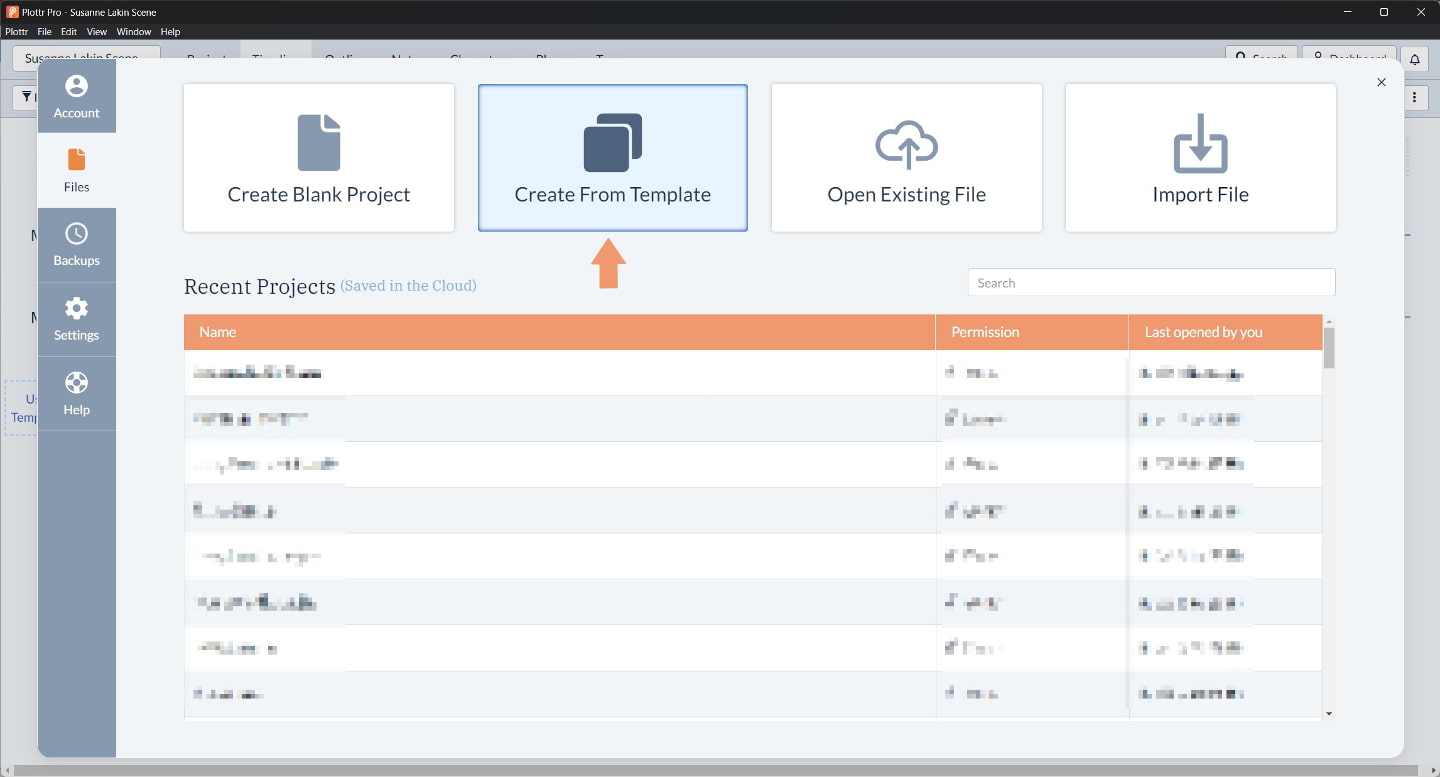
- Step 2: Select the Bromancing the Beat template from the sidebar. Then click on Create New Project
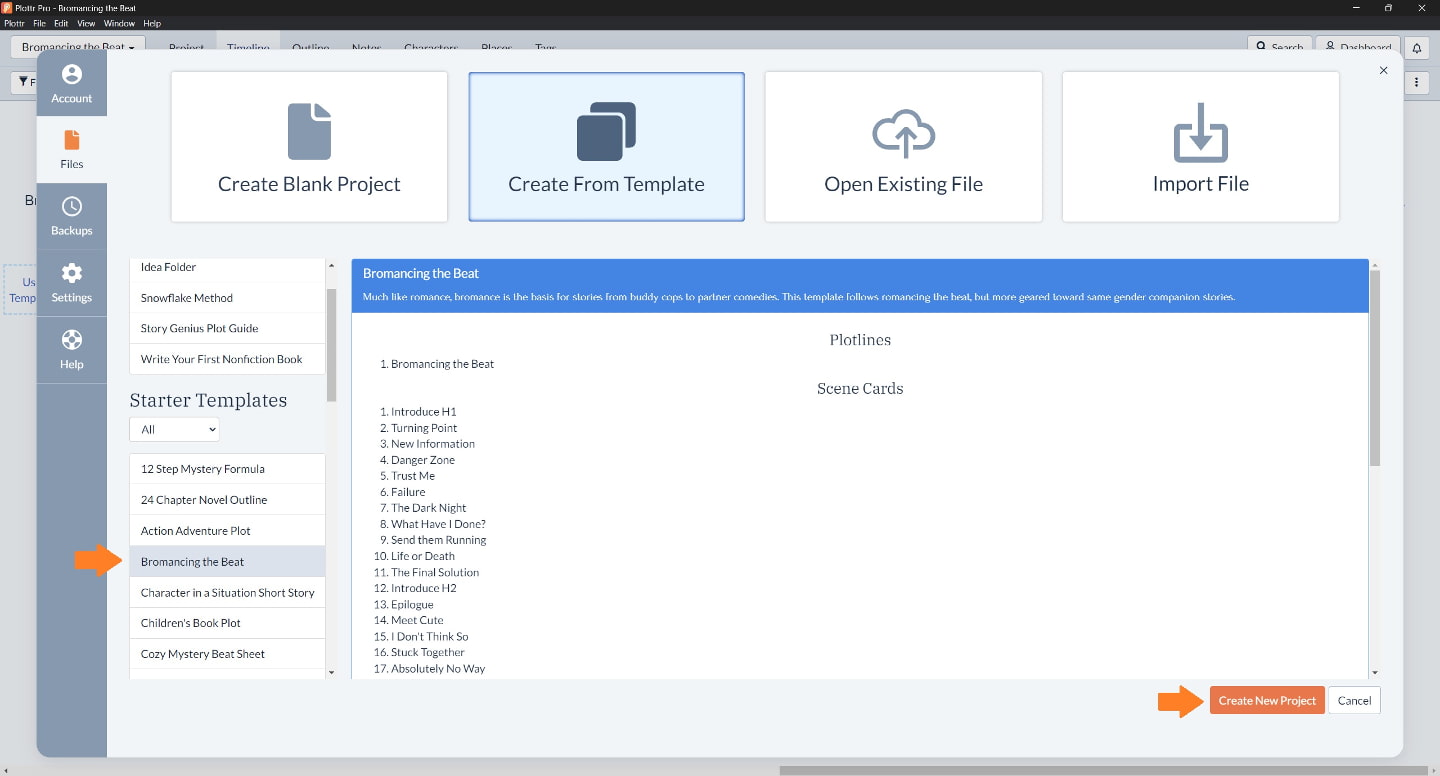
- Step 3: Give your project a name. The name will be included on your list of projects so you can return to it at any time
- Step 4: The template will open in Timeline view
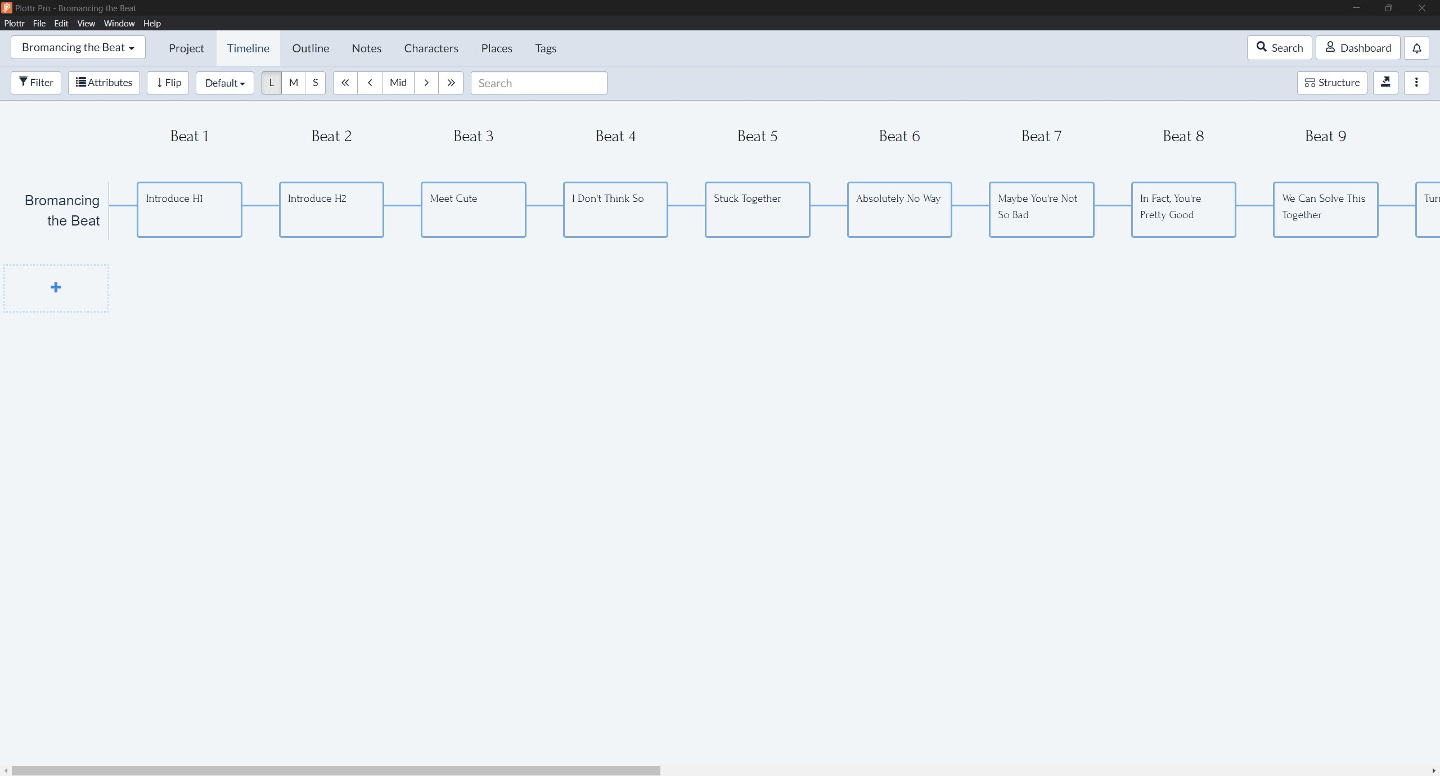
- Step 5: Open any scene card to start adding your ideas! You can save the guideline text to refer to, or delete and replace it
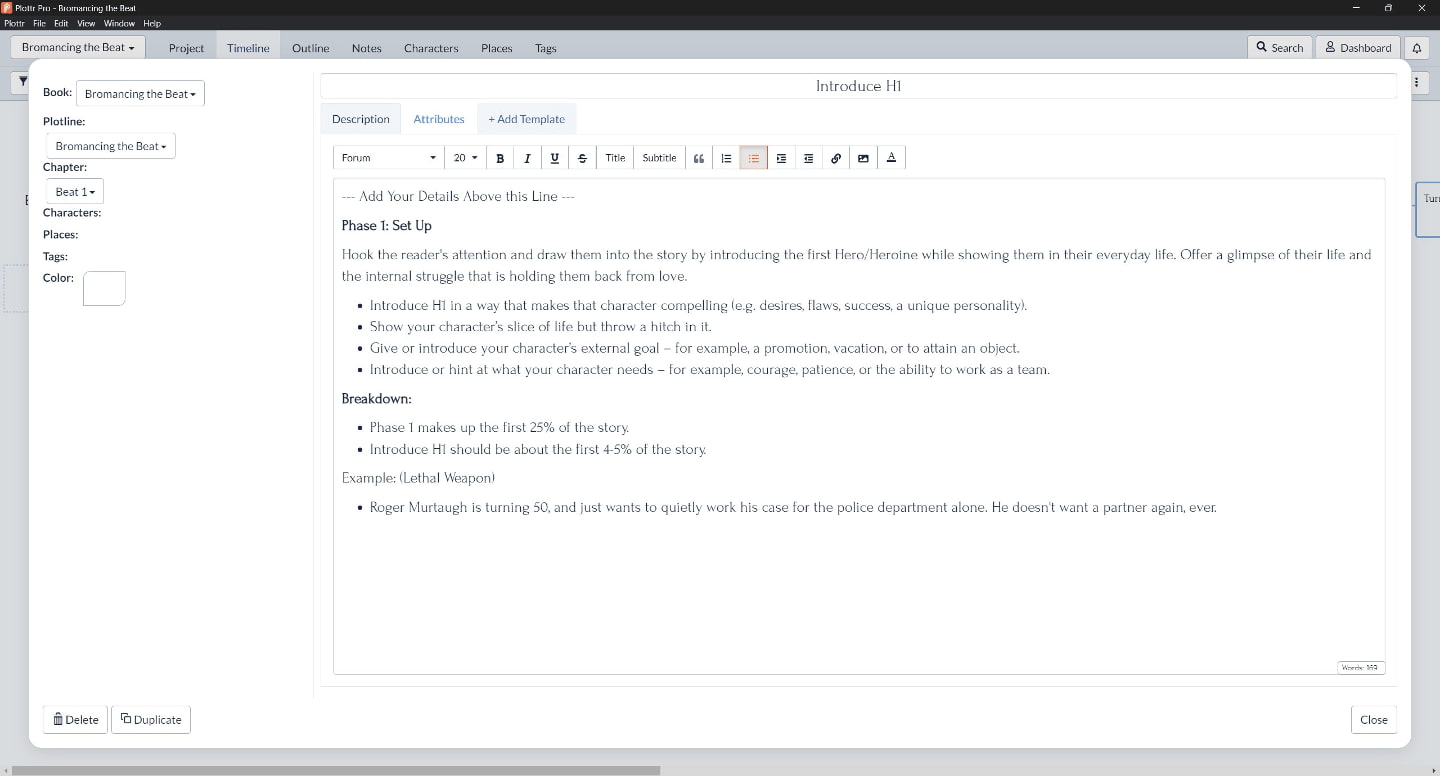
-OR-
In an existing timeline, hover over the plus button to add another plot line. On the left side of the box, choose Use Template. Select Bromancing the Beat, and the template will be inserted into your timeline.
Plot templates work well together. You could combine Bromancing the Beat and Romancing the Beat for example to create a separate love interest arc. Try this template with these others:
Write Better Bromances with Plottr
Ready to enjoy the beginning of a great friendship? Get started with the Bromancing the Beat plot template now with a free Plottr trial. You can also explore Plottr plans and pricing to compare features.
What’s your best bromance of all time? Tell us in the comments below!
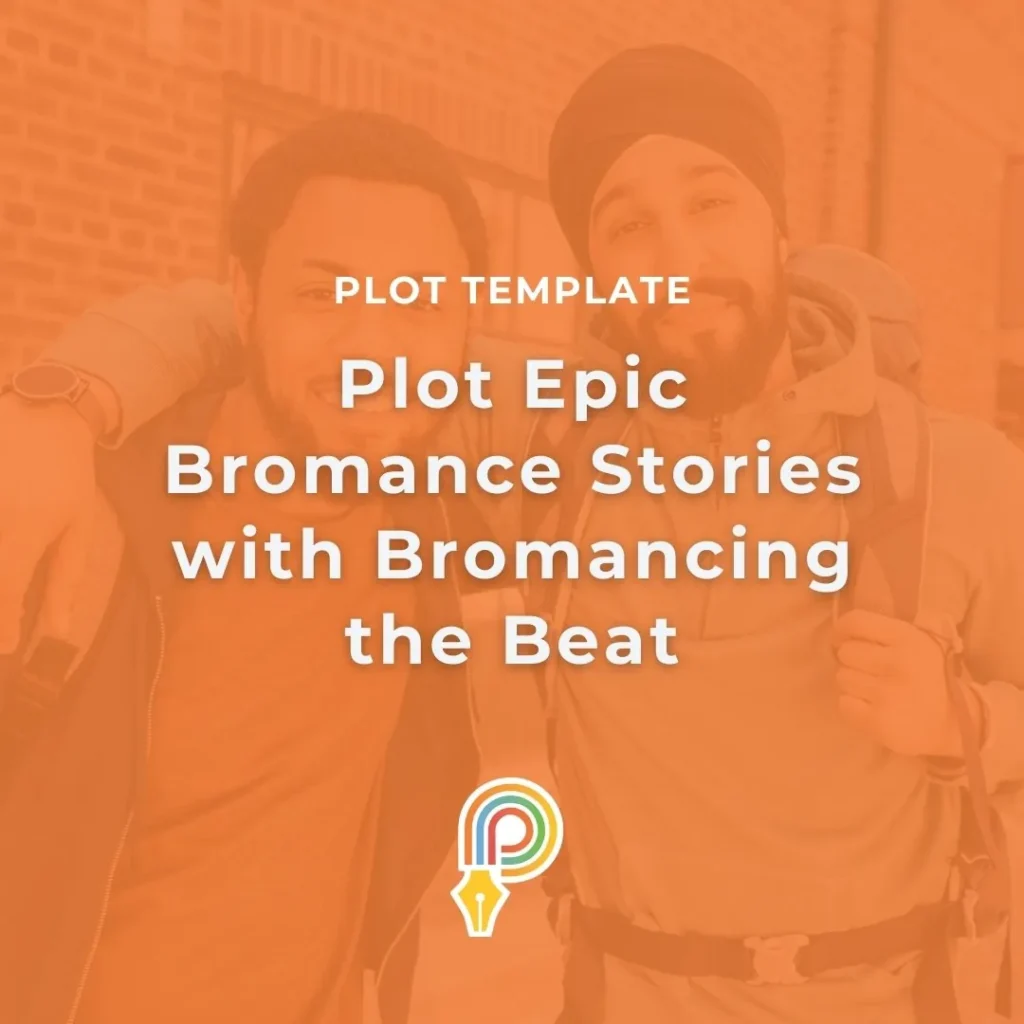

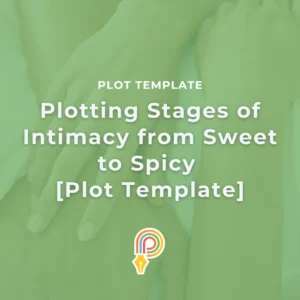
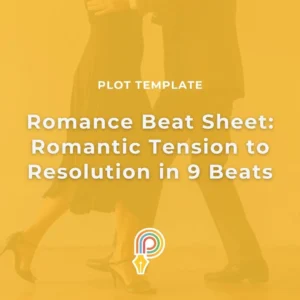
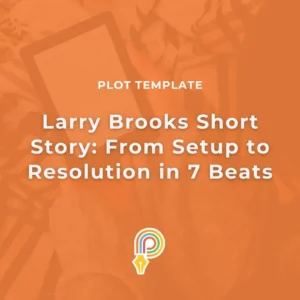

1 thought on “Plot Epic Bromance Stories with Bromancing the Beat”
Hey there! I wanted to take a moment to let you know how much I enjoyed this blog post. Your insights were incredibly helpful and thought-provoking. It’s clear that you put a lot of effort into your writing. Thank you for sharing your expertise with us. Looking forward to your next post!